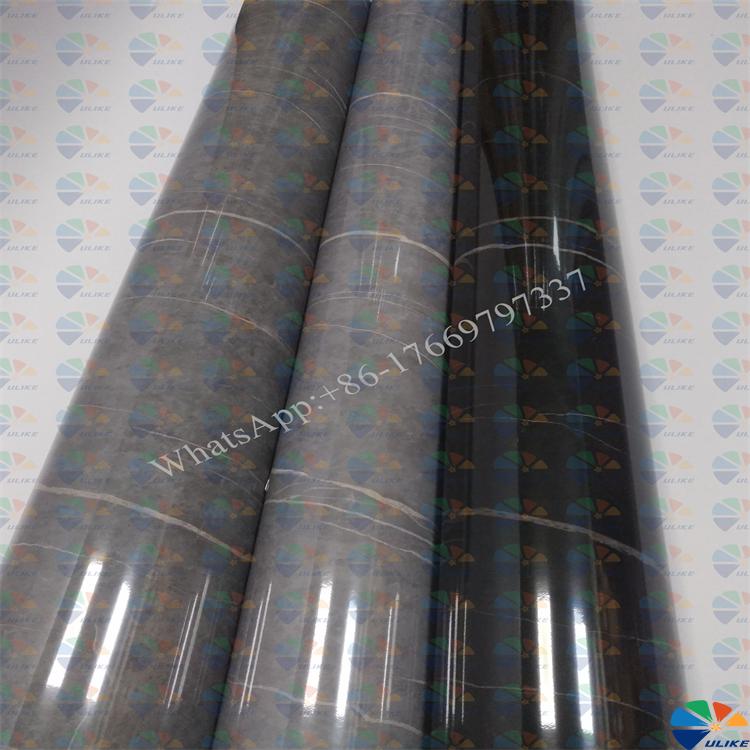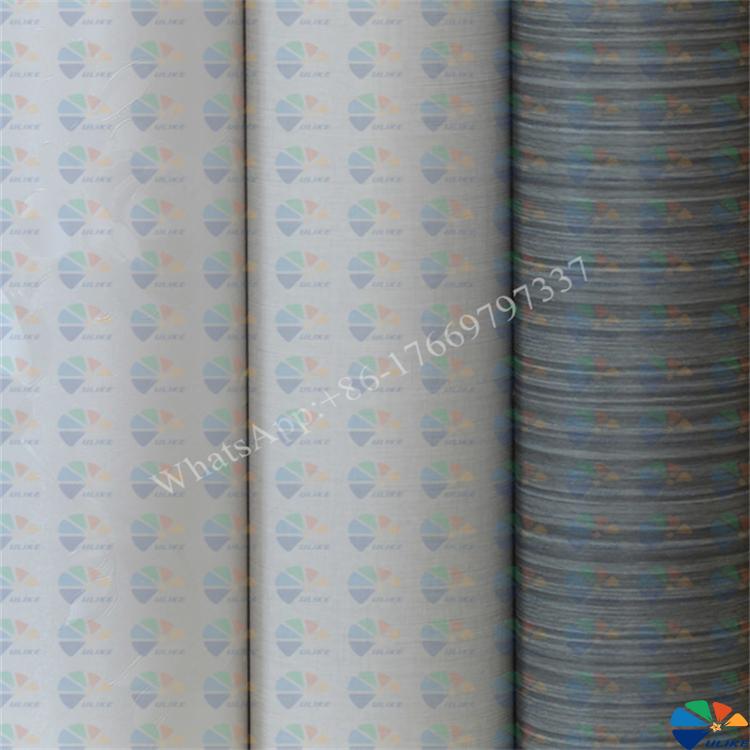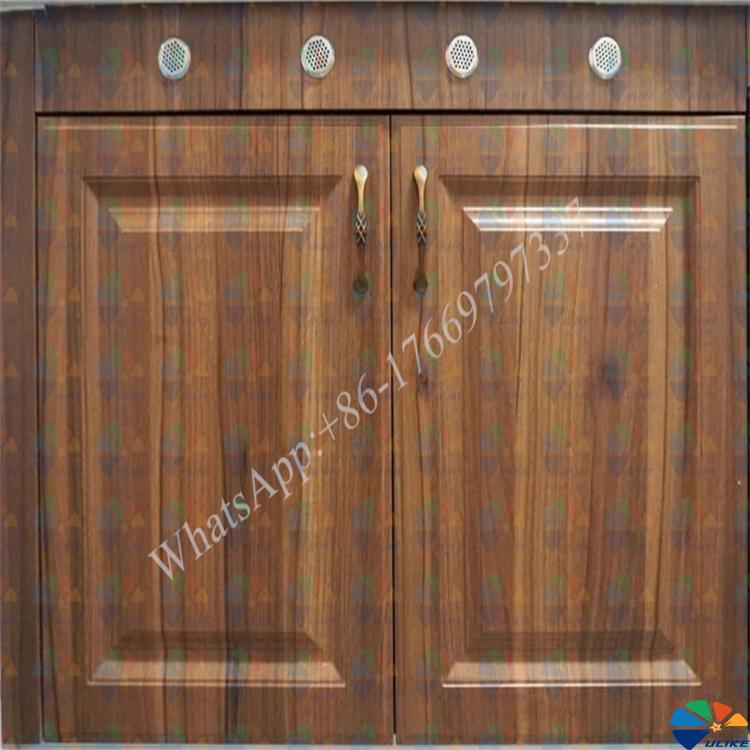Classification and specific uses of PVC film
Classification and specific uses of
PVC film
PVC lamination film is a versatile material. Due to its durability, economy and plasticity, it is widely used in many fields such as building materials, packaging, and advertising. PVC film can be divided into the following categories according to its characteristics and application scenarios:
1.
Rigid PVC Film
Rigid PVC film is a film without plasticizers, which is usually used in application scenarios with high requirements for rigidity and strength. Its main features are good chemical resistance and electrical insulation, and it is widely used in the following fields:
Building materials industry: used to make wall panels, ceilings, floors and window frames, providing excellent wear resistance, corrosion resistance and weather resistance.
Advertising industry: used to make outdoor advertising signs, and is favored for its UV resistance and weathering resistance.
2.
Flexible PVC Film
Soft PVC film has good flexibility and transparency due to the presence of plasticizers. This film is widely used in the following fields:
Packaging materials: used for packaging of food, medicine, electronic products, etc., providing good sealing and barrier properties to ensure the safety and freshness of the products.
Medical industry: used to produce medical gloves, infusion bags, blood bags, etc., because it is easy to form, non-toxic and odorless, and has excellent chemical resistance and biocompatibility.
3. Calendered PVC Film
Calendered PVC film is a high-quality film produced by calendering process, usually used in applications with high surface requirements. Its application areas include:
Decorative materials: used for surface decoration of furniture, walls, floors, etc., providing a variety of colors and patterns to choose from, and has good scratch resistance and easy cleaning properties.
Automotive industry: used for car body film and interior coating, providing beautiful appearance and protection, and extending service life.
4.
Co-extruded PVC Film
Co-extruded PVC film is produced by multi-layer co-extrusion process, has a multi-layer structure, and can have different functional properties in one film at the same time. Its main applications include:
Waterproof materials: used for building waterproofing projects such as roof waterproofing and basement moisture-proofing, providing excellent waterproof performance and durability.
Electronic products: used for electrical insulation such as cables and plugs, and widely used due to its excellent flame retardancy and electrical properties.
5. PVC Hot Lamination Film
PVC hot lamination film is a film attached to the surface of the substrate through hot pressing technology, with extremely high adhesion and durability. Its main uses include:
Furniture lamination: used for kitchen cabinet doors and wardrobe surfaces, providing waterproof and scratch-resistant surface treatment while improving aesthetics.
Book binding: used as a protective layer for book covers to prevent wear and fading and extend the service life of books.
Future development trends
With the enhancement of environmental awareness and the advancement of technology, the future development trends of PVC films are mainly concentrated in the following aspects:
Environmentally friendly PVC film: With increasingly stringent environmental regulations, low volatile organic compounds (VOC) and recyclable PVC films will become the mainstream of the market, especially in the fields of building materials and packaging.
Functional PVC film: Functional PVC film for specific application needs, such as antibacterial, UV protection, and high barrier film, will be more widely used and developed.
New processing technology: Through new processes such as nanotechnology and co-extrusion technology, the performance and application range of PVC film are improved, especially in the high-end market.
As an important industrial material, PVC film will still occupy an important position in the future market with its diverse performance and wide application.



![af]() Afrikaans
Afrikaans![sq]() Albanian
Albanian![am]() Amharic
Amharic![ar]() Arabic
Arabic![fr]() French
French![es]() Spanish
Spanish![ru]() Russian
Russian![de]() German
German![hy]() Armenian
Armenian![it]() Italian
Italian![ja]() Japanese
Japanese![ko]() Korean
Korean![pt]() Portuguese
Portuguese![hi]() Hindi
Hindi![az]() Azerbaijani
Azerbaijani![ro]() Romanian
Romanian![pl]() Polish
Polish![th]() Thai
Thai![el]() Greek
Greek![eu]() Basque
Basque![en]() English
English![zh-CN]() Chinese (Simplified)
Chinese (Simplified)![zh-TW]() Chinese (Traditional)
Chinese (Traditional)![be]() Belarusian
Belarusian![bn]() Bengali
Bengali![bs]() Bosnian
Bosnian![bg]() Bulgarian
Bulgarian![ca]() Catalan
Catalan![ceb]() Cebuano
Cebuano![ny]() Chichewa
Chichewa![co]() Corsican
Corsican![hr]() Croatian
Croatian![cs]() Czech
Czech![da]() Danish
Danish![nl]() Dutch
Dutch![eo]() Esperanto
Esperanto![et]() Estonian
Estonian![tl]() Filipino
Filipino![fi]() Finnish
Finnish![fy]() Frisian
Frisian![gl]() Galician
Galician![ka]() Georgian
Georgian![gu]() Gujarati
Gujarati![ht]() Haitian Creole
Haitian Creole![ha]() Hausa
Hausa![haw]() Hawaiian
Hawaiian![iw]() Hebrew
Hebrew![hmn]() Hmong
Hmong![hu]() Hungarian
Hungarian![is]() Icelandic
Icelandic![ig]() Igbo
Igbo![id]() Indonesian
Indonesian![ga]() Irish
Irish![jw]() Javanese
Javanese![kn]() Kannada
Kannada![kk]() Kazakh
Kazakh![km]() Khmer
Khmer![ku]() Kurdish (Kurmanji)
Kurdish (Kurmanji)![ky]() Kyrgyz
Kyrgyz![lo]() Lao
Lao![la]() Latin
Latin![lv]() Latvian
Latvian![lt]() Lithuanian
Lithuanian![lb]() Luxembourgish
Luxembourgish![mk]() Macedonian
Macedonian![mg]() Malagasy
Malagasy![ms]() Malay
Malay![ml]() Malayalam
Malayalam![mt]() Maltese
Maltese![mi]() Maori
Maori![mr]() Marathi
Marathi![mn]() Mongolian
Mongolian![my]() Myanmar (Burmese)
Myanmar (Burmese)![ne]() Nepali
Nepali![no]() Norwegian
Norwegian![ps]() Pashto
Pashto![fa]() Persian
Persian![pa]() Punjabi
Punjabi![sm]() Samoan
Samoan![gd]() Scottish Gaelic
Scottish Gaelic![sr]() Serbian
Serbian![st]() Sesotho
Sesotho![sn]() Shona
Shona![sd]() Sindhi
Sindhi![si]() Sinhala
Sinhala![sk]() Slovak
Slovak![sl]() Slovenian
Slovenian![so]() Somali
Somali![su]() Sudanese
Sudanese![sw]() Swahili
Swahili![sv]() Swedish
Swedish![tg]() Tajik
Tajik![ta]() Tamil
Tamil![te]() Telugu
Telugu![tr]() Turkish
Turkish![uk]() Ukrainian
Ukrainian![ur]() Urdu
Urdu![uz]() Uzbek
Uzbek![vi]() Vietnamese
Vietnamese![cy]() Welsh
Welsh![xh]() Xhosa
Xhosa![yi]() Yiddish
Yiddish![yo]() Yoruba
Yoruba![zu]() Zulu
Zulu




